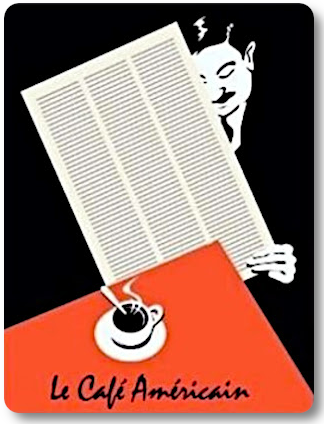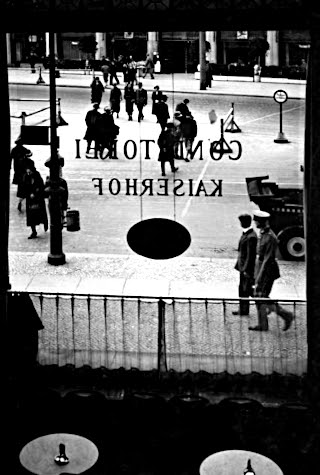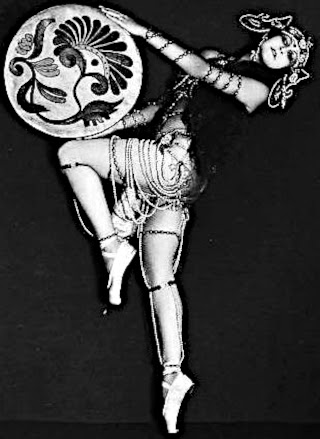As you may recall we have a hypothesis that gold, the swiss franc, and the yen have all been helping to fuel the carry trade.
The yen has exploded higher, while the swiss franc has languished because of that country's heavy exposure to the financial system (16% of GDP) and the toxic debt problems throughout Europe.
As far as we know, gold does not have a similar issue with toxic bank debt, and from the numbers still looks to be heavily involved in carry trades based off leased central bank gold.
In reading this, it becomes clear that the IMF believes that once gold is lent out it becomes the property of the borrower who may in turn lend it out to third parties. What the lender holds is the 'promise' of the return of the gold at some future date.
What we find shocking however is that on the books there is no accounting for this potential liability. The gold that is lent out is still marked as 'gold reserves.'
What is the extent of this lending? How many ounces of central bank gold are really just paper promises for its return? If the dominos start falling in this carry trade it is very likely that there will be a declaration of force majeure, and the contracts will be settled in paper.
But it could be very embarrassing to the monetary authorities who have dealt away the possessions of their countries without inquiring about their ability to do so, or making their behind the scenes deals public. One way to settle this ahead of time is to promote 'gold sales' in which the paper settlement process is accelerated.
Watch this, because its sure to get interesting.
The Nature of Lease Payments on Gold Loans
BOPTEG ISSUES PAPER # 21A
IMF COMMITTEE ON BALANCE OF PAYMENTS STATISTICS
BALANCE OF PAYMENTS TECHNICAL EXPERT GROUP (BOPTEG)
Prepared by International and Financial Accounts Branch
Australian Bureau of Statistics
November 2004
Gold Loans
Gold loans or deposits are undertaken by monetary authorities to obtain a non-holding gain return on gold. The physical stock of gold is "lent to" or "deposited with" a financial institution (such as a bullion bank) or another party in the gold market (such as an intermediary for a gold dealer or gold miner with a temporary shortage of gold). In return, the borrower may provide the monetary authority with high quality collateral, but no cash, and will make a series of payments, known as lease payments.
The party who borrows the gold from a monetary authority may in turn "lend" the gold to a dealer or miner.
This ability to on-lend indicates that, while the package of transactions which makes up a gold loan is clearly very different from an outright sale of the gold, the rights and privileges associated with ownership of the gold have changed from the monetary authority to the borrower.
The loan or deposit may be placed on demand or for a fixed period. The amount of gold to be returned is based on the volume initially lent, regardless of any changes in the gold price.
The security and liquidity aspects of the monetary authority's gold loan claims on the depository corporations are regarded as a substitute for physical gold, such that the loan values are retained within the monetary authority's monetary gold reserves, leaving monetary gold stocks unchanged. If the loan is for a fixed period, it is usually available on short notice, to help meet the criteria for inclusion in reserve assets.
Gold loans or deposits share many of the characteristics of securities repurchase agreements (repos) and securities lending, the statistical treatment of which has proved intractable.
Gold Swaps
In order to analyse gold loans, it is useful to first understand gold swaps.
A gold swap involves an exchange of gold for foreign exchange deposits, with an agreement that the transaction be unwound at an agreed future date, at an agreed price. Gold swaps are usually undertaken between monetary authorities, although gold swaps sometimes involve transactions when one of the parties is not a monetary authority. In this case, the other party is usually a depository corporation. (A monetary authority is a central bank or Treasury. We wonder if J. P. Morgan is one of these swap parties since they are the major player int he global gold derivatives market - Jesse)
Gold swaps are undertaken when the cash-taking monetary authority has need of foreign
exchange but does not wish to sell outright its gold holdings. The monetary authority acquiring the foreign exchange pays an agreed rate, known as the gold forward rate. At maturity, the volume of gold returned is the same as that swapped, while the value of the foreign exchange - as determined at the time of initiation of the swap - is returned.
While, because of the limited number of players, gold swaps are unlikely to be tradable, they have all of the other characteristics of a financial derivative. The gold forward rate, which determines the payments associated with a gold swap, is set taking into account current and expected interest rates and gold prices. If gold swaps are considered financial derivatives, in statistical terms the payments associated with a gold swap are transactions in a financial derivative. Otherwise, the payments may be considered margin payments on a forward contract.
Components of a Gold Loan
A gold loan can be seen as a gold swap where the borrower of the gold provides no foreign exchange in exchange for the transfer of the gold. That is, a gold loan is a gold swap with an extra leg, whereby the gold lender lends the money received back to the gold borrower.
In order to gain an understanding of a gold loan, it is useful to separate it into three parts:
1. Change of Ownership of Gold - the monetary authority transfers the physical stock of gold to the borrower. The borrower can (and usually does) sell the gold to a third party.
2. Loan - as the borrower has ownership of the gold but has not paid for it, the monetary authority is deemed to have issued a loan to the borrower equal to the value of the gold. The borrower has a loan liability to the monetary authority. (Is the gold still reported in the lender's listed reserves? - Jesse)
3. Forward Contract - the borrower enters into a forward contract to deliver the original quantity of gold borrowed, to the monetary authority when the gold loan matures. At the maturity date, the monetary authority extinguishes the loan claim on the borrower in exchange for the receipt of the borrowed gold.
Analysing these components helps to understand the multiple positions and flows which are combined to make up a gold loan, and hence to understand the nature of the loan and the lease payments.
Lease Rates
In the case of a gold swap, the gold lender (cash taker) makes payments at an agreed rate, the gold forward rate, to the gold borrower.
If the above view of gold loans is correct, one component of the lease payments is the same payments as in a swap, but these are more than offset by interest on the loan going in the other direction, resulting in a net payment by the gold borrower to the gold lender (the opposite direction of the payment under a swap).
These payments are called gold lease payments and, according to the above view of gold loans, are made up of:
• interest on the loan, and
• transactions in a financial derivative or margin payments on a forward contract.
London Bullion Market Association Statistics
London Bullion Market Association Gold and Silver Fix and Forwards
To test the validity of this view, it is useful to look at how gold lease rates are determined in the market:
Gold lease rate = LIBOR - GOFO rate
LIBOR is the London Inter-Bank Offered Rate, a widely used international risk-free interest rate.
The GOFO rate is the Gold Forward Offered rate, which is the rate at which contributors (the market making members of the London Bullion Market Association) are prepared to swap gold against US dollars.
The charts below show the daily gold price and the daily one year LIBOR, GOFO, and gold lease rates over the past seven years.
The relationship of LIBOR and the GOFO rate to the lease rate is shown in Chart 2.
Comparing Chart 1 and Chart 2 shows that the gap between GOFO and LIBOR is significant in times of falling gold prices, and GOFO approaches LIBOR in times of rising gold prices.
The composition of the lease rate supports the view of the components of a gold loan outlined above. The payment of interest indicates the existence of a loan and the use of the GOFO rate indicates the existence of a gold swap.
Conclusion
The topic of this paper is the treatment of the lease payments on gold loans. The analysis of the positions and the flows has been done together as it is not possible to draw conclusions on the nature of the flows without looking at the positions to which they relate.
The description of components of a gold loan in this paper is likely to be controversial given the state of the overall debate on reverse transactions, but it is hopefully a useful contribution to that debate. The empirical support lent by the derivation of the lease rate, that is that the loan is seen by those setting the rate as a loan and a swap, may prove useful in that debate.
The conclusion on the nature of the lease payments is that they are the net of two flows, interest on a loan and transactions in a financial derivative or margin payments on a forward contract.
These should be recorded separately.
Hat tip to Steve Williams at CyclePro for bringing this paper to our attention.




































